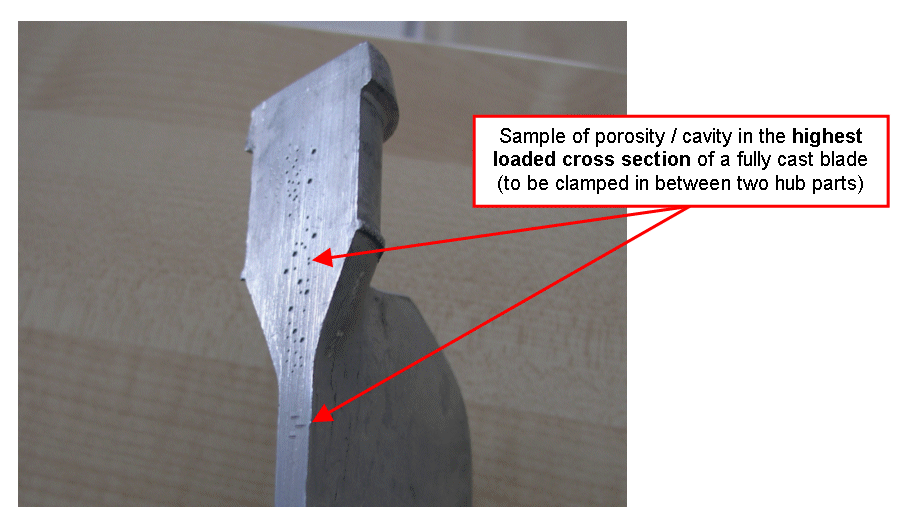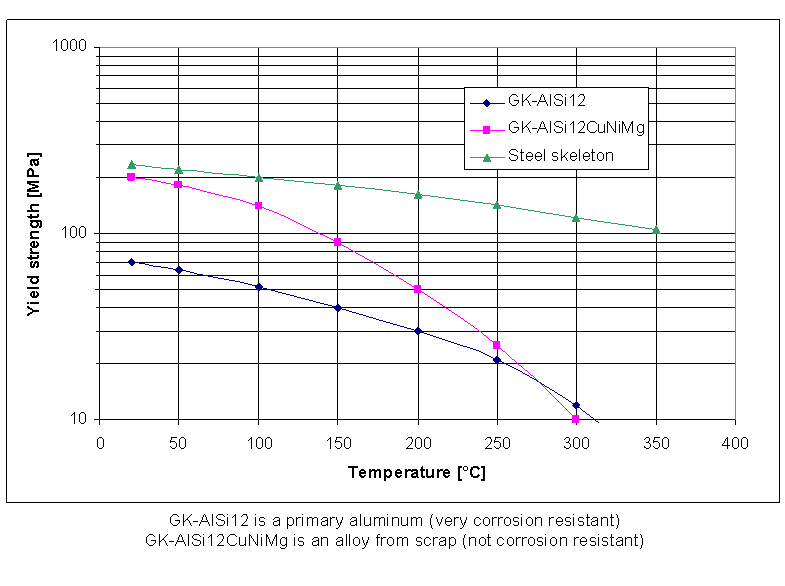Introduction
In the first generation of cast aluminium axial fan blades, wholly cast aluminium was used. A good aerodynamic shape of the blades could be obtained in the casting process. But aluminium has some weaknesses. The tensile and yield strength values are much lower than for steel. The strength of aluminium decreases dramatically at slightly elevated temperatures and the aluminium begins to creep. Also, during the casting process voids, cracks and other casting faults often occur. Some may be found by X-ray screening, others may pass undetected.
Even using forged aluminium does not change the fact that aluminium as a material has a low melting point and gets soft at much lower temperatures than steel.
Therefore the next generation of cast aluminium was based on elements of nature. Primitive designs, such as jellyfish, worms and first generation cast aluminium axial fan blades have a core that is not stronger than the rest of the shape. More developed designs, such as mammals and later generations of fan blades, have a spine of stronger material.
The outer cast aluminium is used to give a good aerodynamic shape. The inner steel skeleton is used to assure the strength, even at elevated temperatures, such as during emergency smoke extraction. Thus a temperature of e.g. 400°C is not very detrimental to steel, while aluminium at such a temperature hardlys has any strength at all.
Over time the inner skeleton of the fan blades has been developed into different shapes, each optimised for different duties. Most skeleton shapes designed to grip and retain the aluminium, which is soft at higher temperatures, resemble Christmas trees, thus the popular name for the steel skeleton in the axial fan blades from Witt & Sohn AG.
Aluminum impeller designs
There are 2 major designs for aluminum impellers:
- Typ A : Blades and hub cast as one single part
- Typ B : Blades and hub cast separately and connected
For type B impellers there are several methods to fix the blades:
- Typ B1: Blades clamped in between two hub parts
- Typ B2: Blades fixed with separate steel bolt(s) to the hub
- Typ B3: Blades with cast-in high tensile steel skeleton (Christmas Tree®)

The more complicated a mold is, the higher the risk of a casting fault (i.e. complete impellers cast as one part). Additionally the thinner a part becomes the higher the risk of fault (i.e. thin long blades). In both cases extensive checks and examinations (i.e. X-raying) are a must to avoid later breakage of impellers because of unseen casting imperfections.
Strength of aluminum (especially at higher temperatures)
In the last years the requirements for axial impellers have increased more and more concerning
- Higher tip speeds (higher centrifugal forces)
- Higher pressure/thrust (higher axial forces)
- Higher risk of unstable operation (less pressure reserves in aerodynamic calculations, higher dynamic forces −> fatigue)
- Resistance at higher temperatures (emergency situations − up to 400°C/2h)
If you compare primary aluminum and basic steel, primary aluminum is much more corrosion resistant than standard steel. But concerning material strength, the yield strength is only a third of that of steel (≈ 70 MPa at 20° instead of ≈ 235 MPa of mild steel). In addition, this yield strength decreases enormously at higher temperatures: Above 300°C aluminum has no relevant yield strength while a steel skeleton has lost virtually no yield strength.

Final comparison table of the different designs
| Type | Description | adjustable pitch | possible tip speed | possible temperature | extensive quality control required | production costs |
|---|---|---|---|---|---|---|
| A | Fully cast Al impeller | no | high | low | no | low |
| B1 | Pure AL blades clamped to hub | yes | low | low | yes | low |
| B2 | Pure Al blades fixed with steel bolt(s) | yes | low | low | yes | low |
| B3 | Al blades with cast in skeleton | yes | high | high | no | high |
Final conclusion: Impellers type B (aluminum blades with cast in skeleton) can be stressed most, but they are the most expensive ones.

